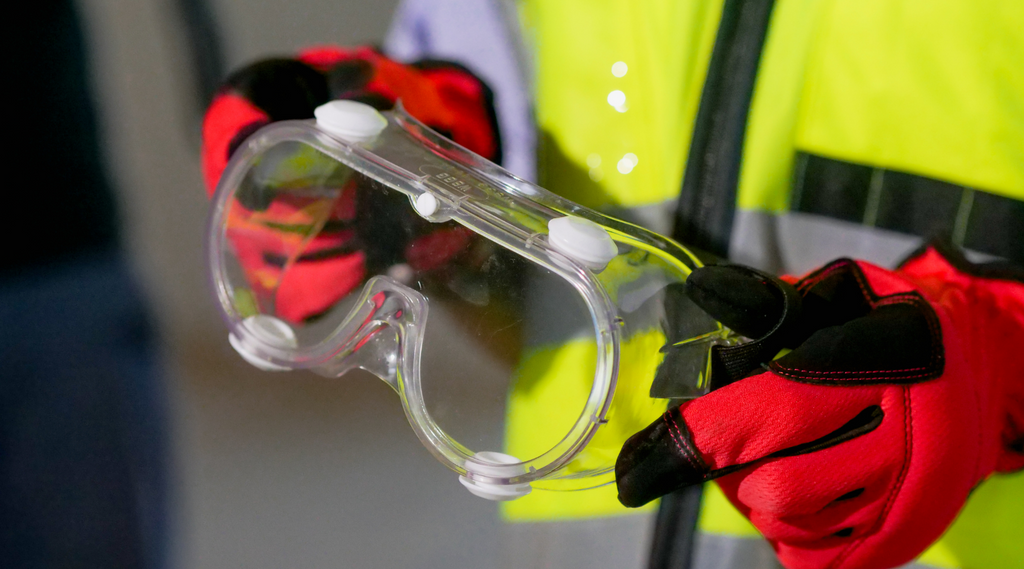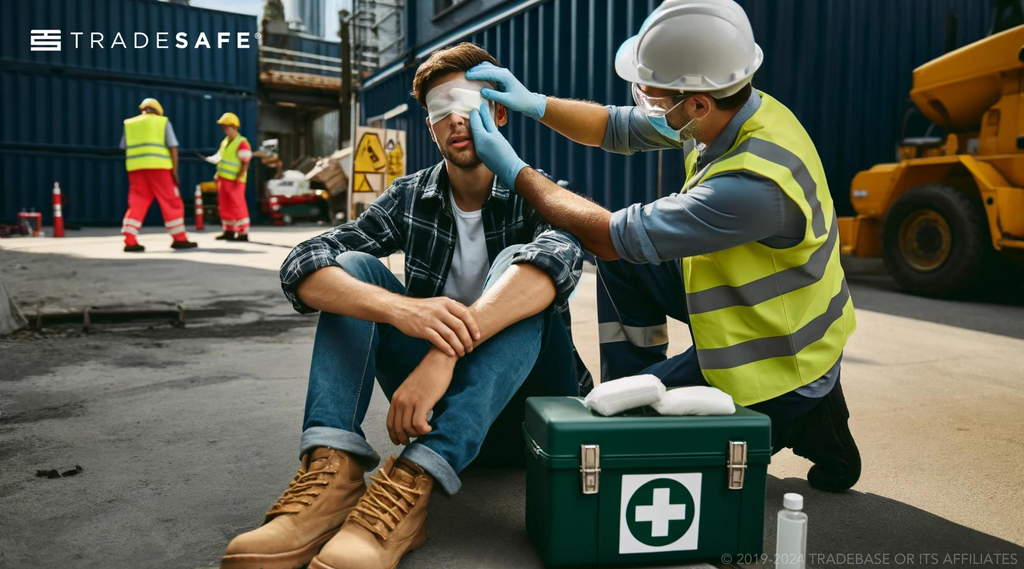
Every day, about 2,000 U.S. workers sustain job-related eye injuries that require medical treatment, according to the National Institute for Occupational Safety and Health (NIOSH). That's a staggering 730,000 injuries in a single year. Even worse, the American Academy of Ophthalmology estimates that up to 90% of these injuries could be prevented with proper safety measures.
These statistics paint a sobering picture of the prevalence of workplace eye injuries. But the true cost goes far beyond the number of injuries. Let's delve deeper into the hidden costs associated with eye injuries in the workplace and explore how to prevent them.
The Hidden Costs of Eye Injuries
The financial burden of workplace eye injuries is significant. Here's a breakdown of the various costs involved:
- Direct Costs: Medical expenses associated with treatment can be substantial. This includes doctor visits, medications, and in some severe cases, surgery. The American Academy of Ophthalmology cites a study estimating the average cost of all eye injuries in the workplace is around $300 million a year in worker’s compensation, medical treatment, and lost productivity.
- Indirect Costs: Lost wages due to missed workdays and potential long-term disability can significantly impact workers and their families. The Bureau of Labor Statistics (BLS) reports that eye injury at work accounts for an estimated 1.7 cases per 10,000 full-time workers requiring days away from work.
- Employer Costs: Companies face financial losses due to worker's compensation claims, training costs for safety protocols, and potential fines for OSHA violations related to inadequate eye protection.
- Worker's Compensation Claims: Employers must bear the costs of worker's compensation claims, which can increase insurance premiums over time. According to the National Safety Council, the average total worker's compensation cost for an eye injury claim can be around $26,500, but severe cases can far exceed this amount.
- Training and Recruitment: Hiring and training replacement workers entail additional costs and resources.
- Fines and Legal Costs: OSHA penalties and fines for safety violations can range from a few thousand dollars for minor infractions up to $70,000 for severe or willful violations. Legal costs associated with workplace injuries can also be significant if the company is found liable for negligence. Such lawsuits can result in settlements or judgments amounting to millions of dollars, especially if the eye injury results in permanent disability or loss of vision.
- Human Cost: The human aspect of eye injury at work is perhaps the most significant yet hardest to quantify cost. Injured workers often experience psychological effects such as depression, anxiety, and stress due to their injuries and the potential loss of livelihood. The impact on their families, who may face financial strain and emotional distress, further compounds these issues.
Common Types of Workplace Eye Injuries
Eye injuries in the workplace can occur across various industries, each with specific risks based on the nature of the injury, the job and the environment. Here’s a closer look at the common types of eye injuries:
Flying Objects: These accidents are prevalent in construction, manufacturing, and woodworking sectors where activities like cutting, grinding, and hammering are common. The types of objects causing these accidents and injuries include metal shards, wood chips, nails, screws, and other small particles that can be ejected at high speeds.
Chemical Burns: Chemical splashes and chemicals are significant hazards in laboratories, industrial plants, and cleaning operations. Acids, alkalis, solvents, and other reactive substances can cause severe eye damage if they come into contact with the eye. Workers in these environments are at risk of sustaining chemical burns that can lead to temporary or permanent vision loss.
Biological Hazards: In the healthcare and agricultural sectors, workers are often exposed to biological hazards that can lead to eye infections and injuries. Pathogens can enter the eye through splashes of bodily fluids or contact with contaminated materials, posing significant risks in these settings.
Ergonomics: With the increasing reliance on computers and digital devices, eye strain injuries have become more prevalent in office settings. Prolonged screen time without appropriate breaks or ergonomic adjustments can lead to visual discomfort, blurred vision, and long-term eye health issues.
How to Prevent Workplace Eye Injuries

The good news is that most eye injuries in the workplace are preventable. Below are effective eye safety tips in the workplace:
1. Provide Safety Tools and Equipment
Employers are responsible for providing Personal Protective Equipment (PPE) tailored to the specific risks of their workplace. This includes eye safety glasses for general protection, goggles for tighter seal against dust and liquids, and face shields for extensive coverage against impacts and splashes. Selecting the right PPE based on a thorough hazard assessment ensures employees have the protection they need against the eye risks they face.
2. Display Safety Signs
Effective communication through clear and visible signage is crucial in alerting employees to potential eye hazards. Signs should be placed in strategic locations, such as entry points to hazardous areas, to remind workers to wear the necessary eye protection. These signs should comply with OSHA's specifications for safety signage, using universally recognized symbols and language to ensure understanding by all employees.
3. Conduct Eye Safety Training
Regular, comprehensive training programs are vital in educating employees about eye safety. This training should cover the identification of eye hazards, correct use and maintenance of eye protection equipment, and emergency response procedures, such as the use of eye wash stations. Interactive and engaging training sessions help reinforce the importance of eye safety and ensure that employees are knowledgeable about protecting themselves.
4. Install Safety Eye Wash Stations
In environments where chemical exposure is a risk, having easily accessible, well-maintained safety eye wash stations is a critical safety feature. Stations must be tested regularly to ensure they function correctly and are contaminant-free. Quick access to emergency eyewash stations in facilities can drastically reduce the severity of chemical burns and other eye injury.
5. Wear Appropriate PPE
Employees must consistently wear the correct PPE for their specific tasks. This involves ensuring that the equipment fits properly, provides adequate protection, and does not impair vision or movement.
6. Take Eye Breaks
Regular breaks from continuous focus, especially on computer screens, can help reduce the risk of eye strain and fatigue. The 20-20-20 rule—looking 20 feet away for 20 seconds every 20 minutes—can be an effective practice to minimize eye strain.
OSHA Requirements for Eye Safety
The Occupational Safety and Health Administration (OSHA) plays a crucial role in ensuring workplace safety. The OSHA standard concerning eye safety and protection, specifically under 29 CFR 1910.133, mandates that employers must provide suitable eye and face protection for employees exposed to eye hazards. This includes protection from flying particles, molten metal, liquid chemicals, acids, caustic liquids, chemical gases, vapors, and harmful light radiation.
Additionally, if employees need prescription lenses, the protective equipment must accommodate these without compromising safety or comfort. The standard emphasizes using protective eyewear that meets the ANSI Z87.1 requirements for impact resistance and other safety criteria, ensuring a baseline of protection for workers across various industries.
First Aid Eye Injury Treatment

Proper first aid for eye injuries can prevent further damage and promote quicker recovery. Here’s a detailed look at first aid procedures for various types of eye injury:
General Tips:
- Stay calm and avoid rubbing your eyes. Rubbing can worsen eye injury and introduce contaminants.
- Remove contact lenses if possible. In case of chemical splashes, keep the eyelids open and flush continuously with clean water or eyewash solution.
Sand, Dust, or Other Small Particles
Symptoms of having sand, dust, dirt, or small particles in the eye include feeling discomfort or irritation, experiencing redness, excessive tearing, and the sensation that something is stuck in the eye.
First Aid:
- Do not rub the eye, as this might scratch the cornea.
- Blink several times to allow tears to wash the particle out.
- Pull the upper eyelid out and down over the lower eyelid to dislodge the foreign object.
- If the particle does not come out, rinse the eye gently in the emergency eyewash station.
- Seek medical attention if the discomfort persists after flushing.
If Hit in the Eye
Being hit in the eye can lead to symptoms such as pain, redness, swelling, and sometimes reduced vision or the appearance of floaters or flashes of light. Even a light blow can cause a significant eye injury, like a retinal detachment.
First Aid:
- Apply a cold compress gently to the injured area to reduce swelling and bruising. Avoid putting pressure directly on the eye.
- Seek medical care if there is severe pain, vision loss, or visible eye damage.
Eye Cut or Punctured
A cut or puncture to the eye may result in sharp pain, visible injury to the eye structure, tearing, and in severe cases, partial or blindness.
First Aid:
- Do not attempt to wash out the eye or remove any objects stuck in it.
- Cover the eye with a rigid, perforated eye shield or a clean paper cup taped in place.
- Call 911 or go to the emergency room immediately.
Chemical Burns and Splashes
Chemical exposure to the eye can cause painful symptoms like burning, redness, blurred vision, and in severe cases, blindness.
First Aid:
- Immediately flush the eye in the eyewash station for at least 15 minutes, keeping the eyelids open.
- Remove contact lenses if present and not already flushed out.
- After flushing, seek immediate treatment.
Other Eye Injuries in the Workplace
General eye injuries can manifest as persistent pain, irritation, redness, tearing, or blurry vision.
First Aid:
- Rinse the eye with clean water if necessary and avoid rubbing or applying pressure.
- If symptoms continue, worsen, or involve changes in vision, consult an ophthalmologist for treatment.
The information provided in this document is for informational purposes only and does not constitute legal, medical, or any other type of professional advice. It should not be used as a substitute for professional advice or judgment. Always consult a qualified professional for advice on medical treatment.
Workplace Eye Injuries FAQs
What is the number one cause of eye injuries for construction workers?
Flying or falling objects, such as debris, nails, and metal pieces, are the leading cause of eye injuries for construction workers.
What type of eye protection should you use when there is dust present?
When dust is present, use safety goggles that seal against the face to prevent particles from entering the eyes.
What can you use to protect your eyes from impact hazards?
Use safety glasses with side protection or face shields to protect the eyes against impact hazards.
When should safety glasses be worn?
Safety glasses should be worn whenever there is a risk of eye injury from physical, chemical, or radiation hazards in the workplace.
How do I know if an eye injury is serious?
An eye injury is serious if there is pain, vision loss, visible damage to the eye, or if symptoms of swelling do not improve after flushing with water. If you can't get to an ophthalmologist right away, go to the emergency room.
Why is eye protection important in the workplace?
Eye protection is crucial to prevent injuries, which can lead to temporary or permanent vision loss, and to ensure overall safety and compliance with workplace regulations.
What are the greatest risks from eye injuries?
The greatest risks from eye injuries include vision loss, infection, damage to the eye structure, and the potential for long-term disabilities.
